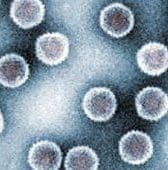
Get A Testing Quote
Infectious Bovine Rhinotracheitis Virus
Structure: Enveloped Virus
Genome: Double-Stranded DNA
Family: Herpesviridae
Primary Host: Cattle of all ages
Disease caused: Conjunctivitis, inappetence, dyspnea, vulvovaginitis in females, and balanoposthitis in males
Potential complications: Respiratory Infections, coughing, poor milk yield, swollen eyelids
Transmission Mode: Inhalation
Sites of Community Outbreaks: Endemic in the United Kingdom with ~40% of cattle exposed to the virus in the past.
Importance of Virus:
After an incubation period of 2-4 days, symptoms such as fever, nasal discharge, and depression can become evident. Eyelids may be swollen from conjunctivitis and drooling of saliva may occur due to ruminal stasis. Most infections are very mild and can last 5-10 days, however secondary bacterial or viral agents being present can result in the infection escalating to severe respiratory disease in young animals due to a multifactor disease complex.
Importance of Disinfection:
BoHV-1 can be contracted via airborne or genital contact. If infected via airborne route, BoHV-1 replicates in the mucous membranes of the upper respiratory tract and tonsils. If infected via genital contact BoHV-1 replicates in the mucous membranes of the vagina or prepuce and becomes latent in the sacral ganglia for the rest of the host’s life. The virus can potentially shed intermittently into the environment and spread via contact with animals. Other members of the Artiodactyla (such as sheep and goats), can be infected as well.
BoHV-1 vaccines aid in reducing the shedding of the virus after infection and helps prevent the development of clinical signs but does not completely prevent the infection. To keep herds from potential BoHV-1 infections, quarantining of purchased cattle of uncertain status and regular vaccinations are recommended. Some European countries have eradicated BoHV-1, but the virus is still prevalent in the United Kingdom.
References
Share

